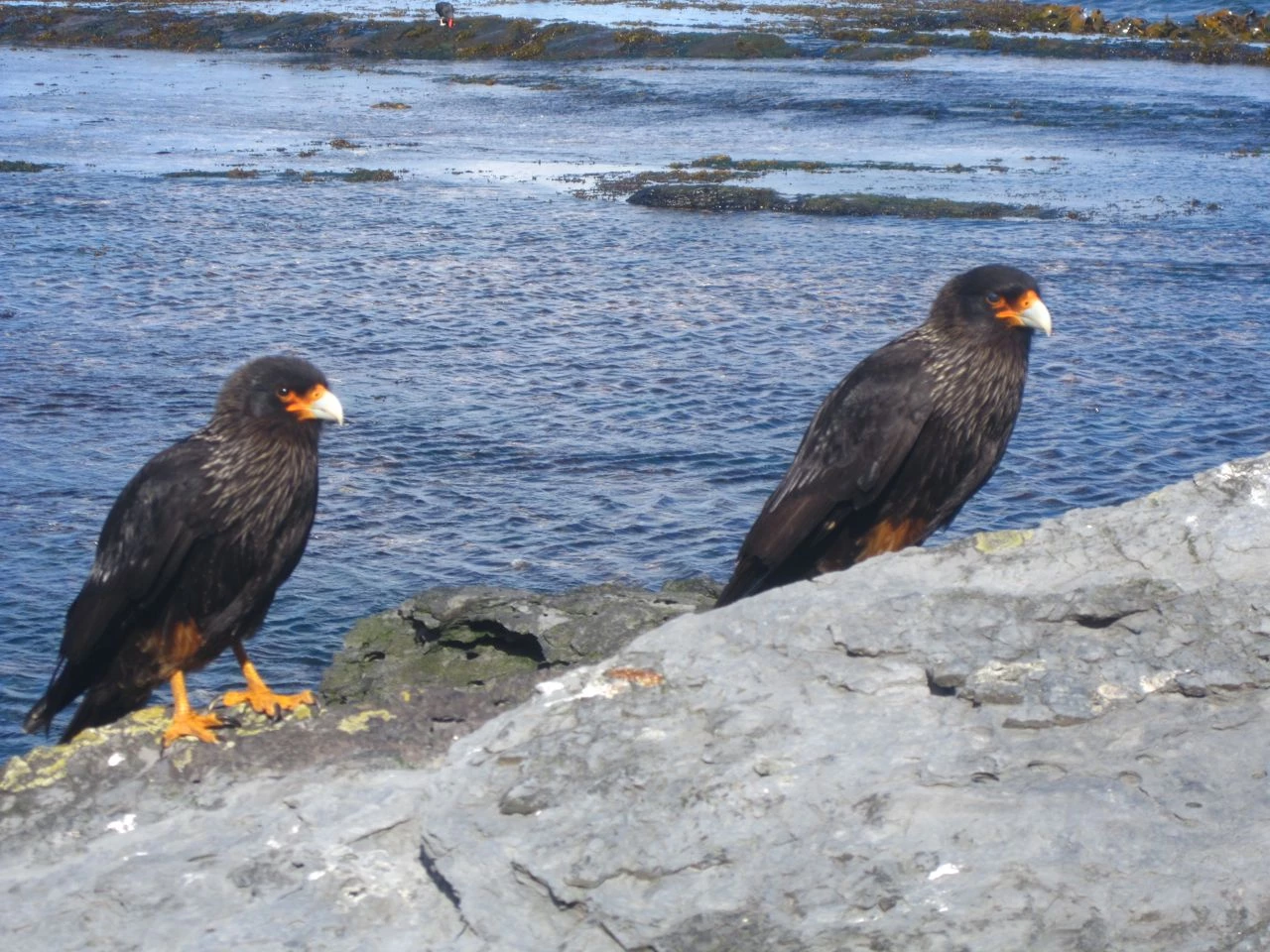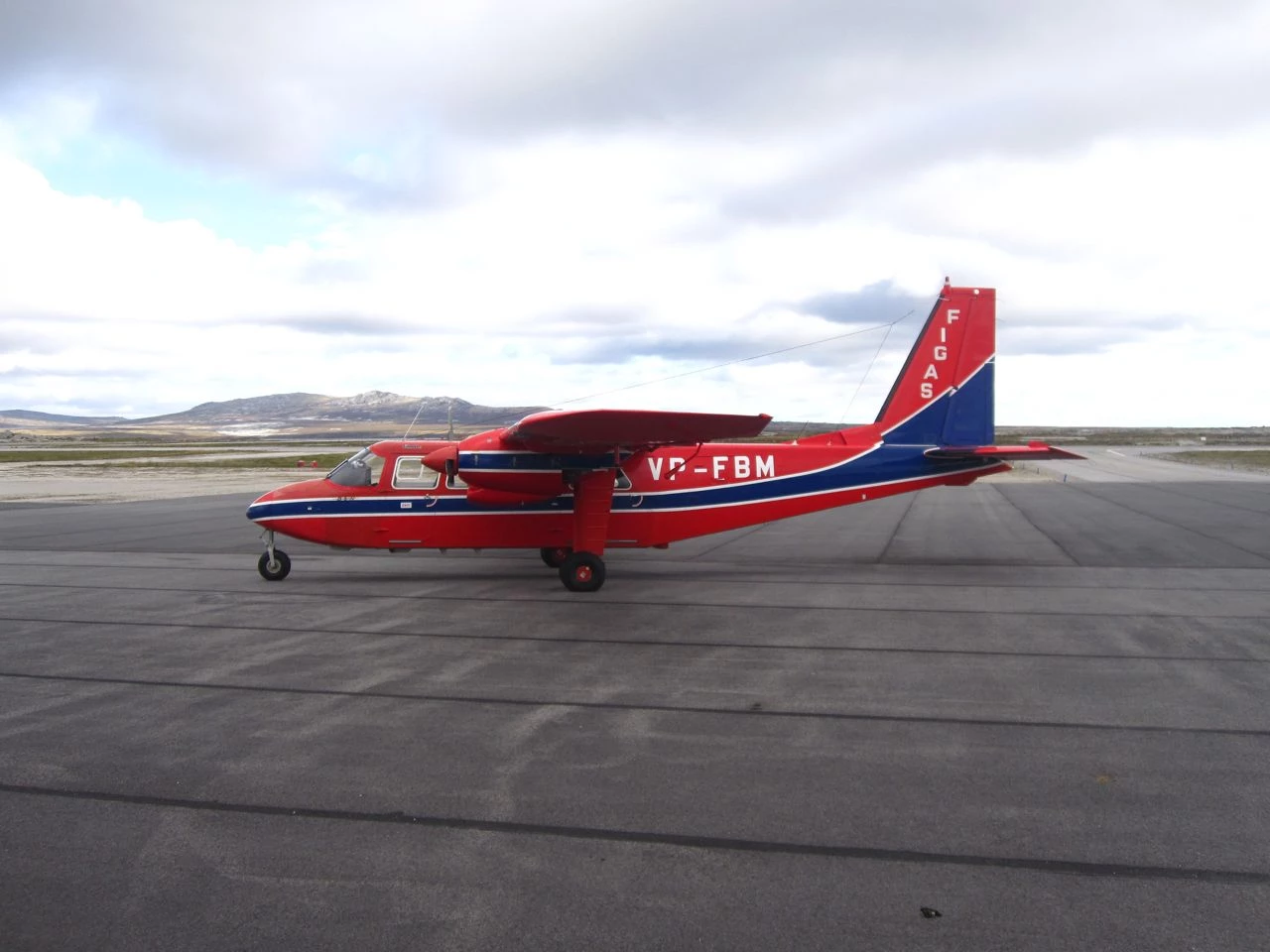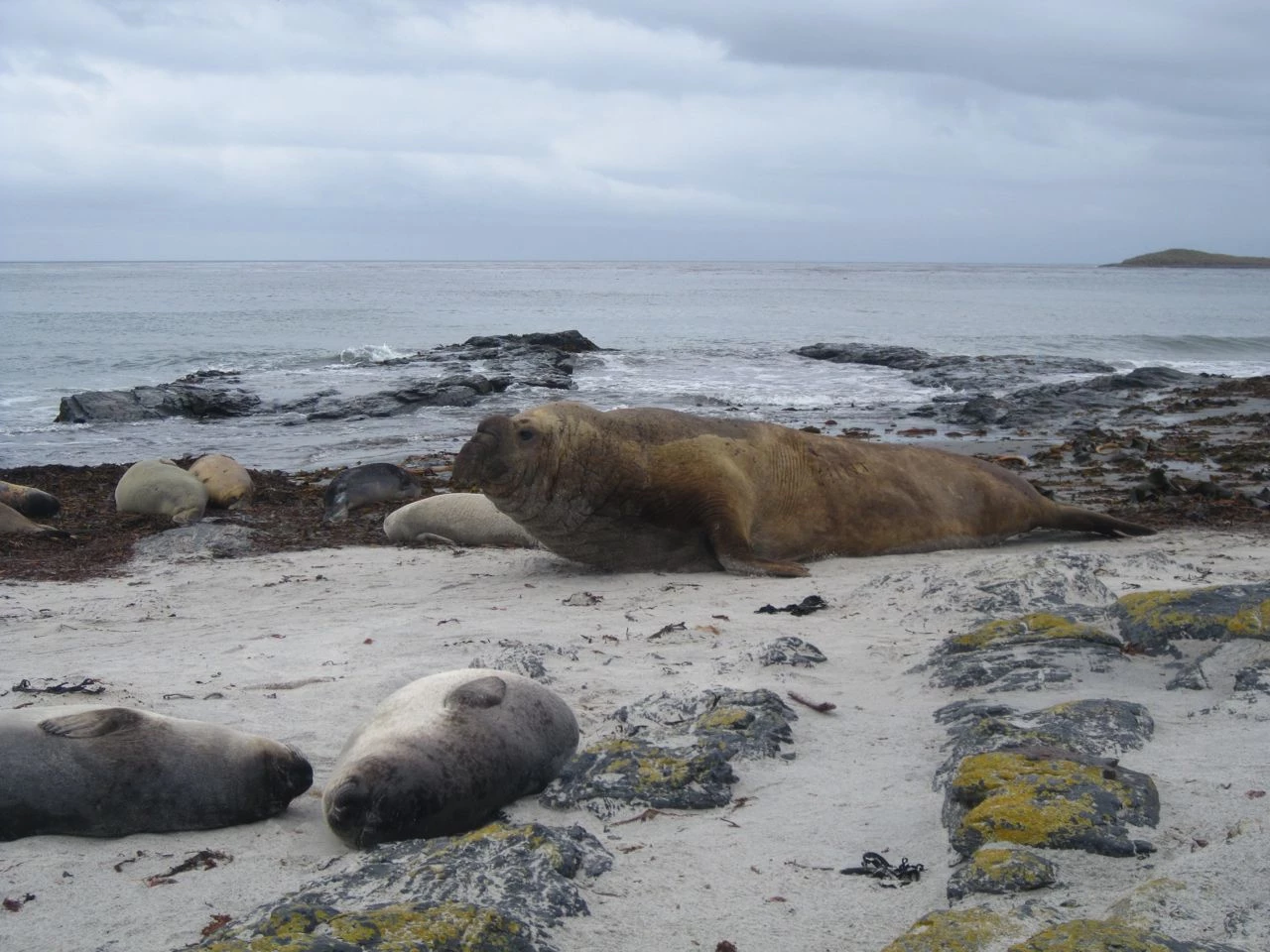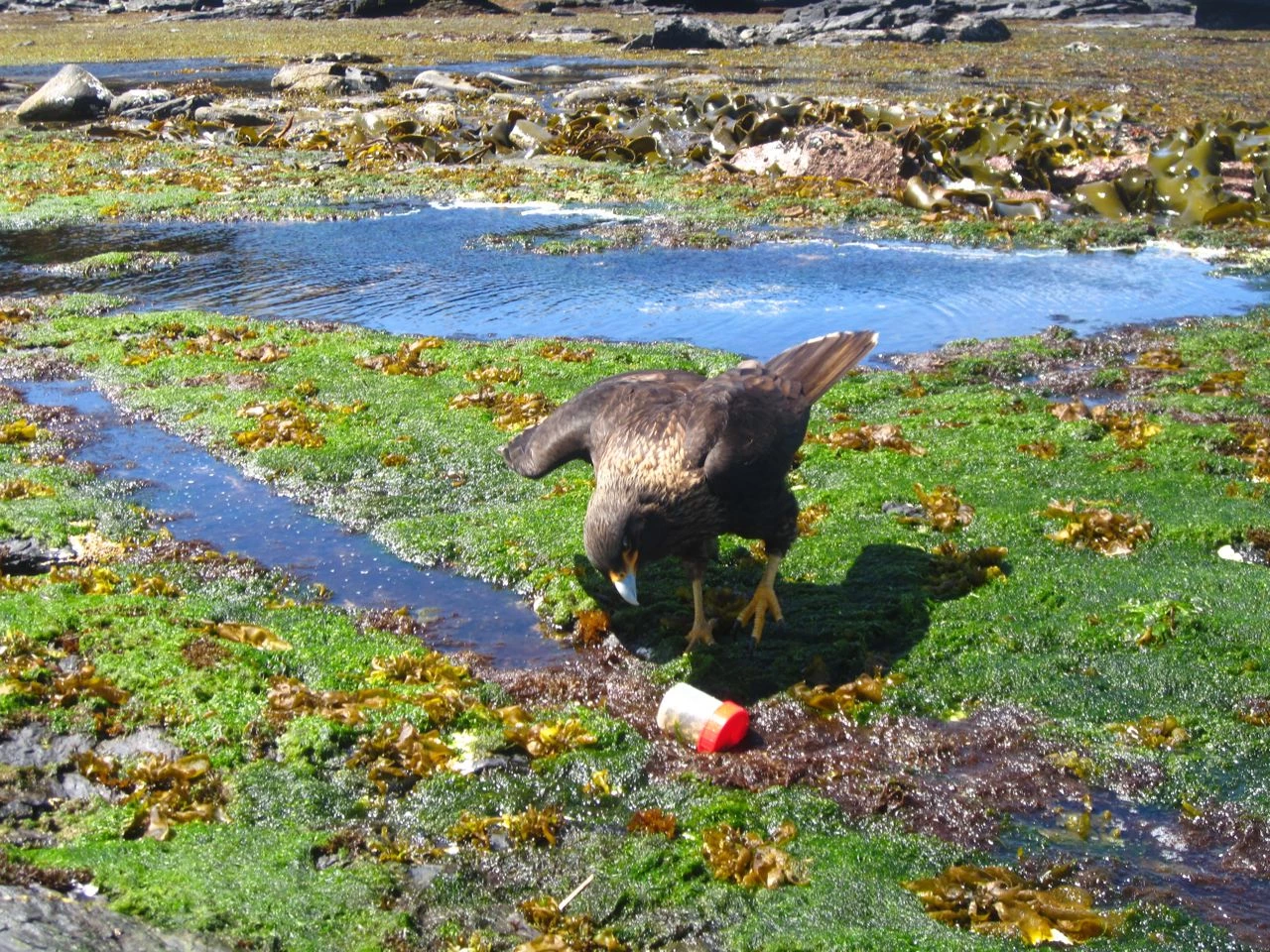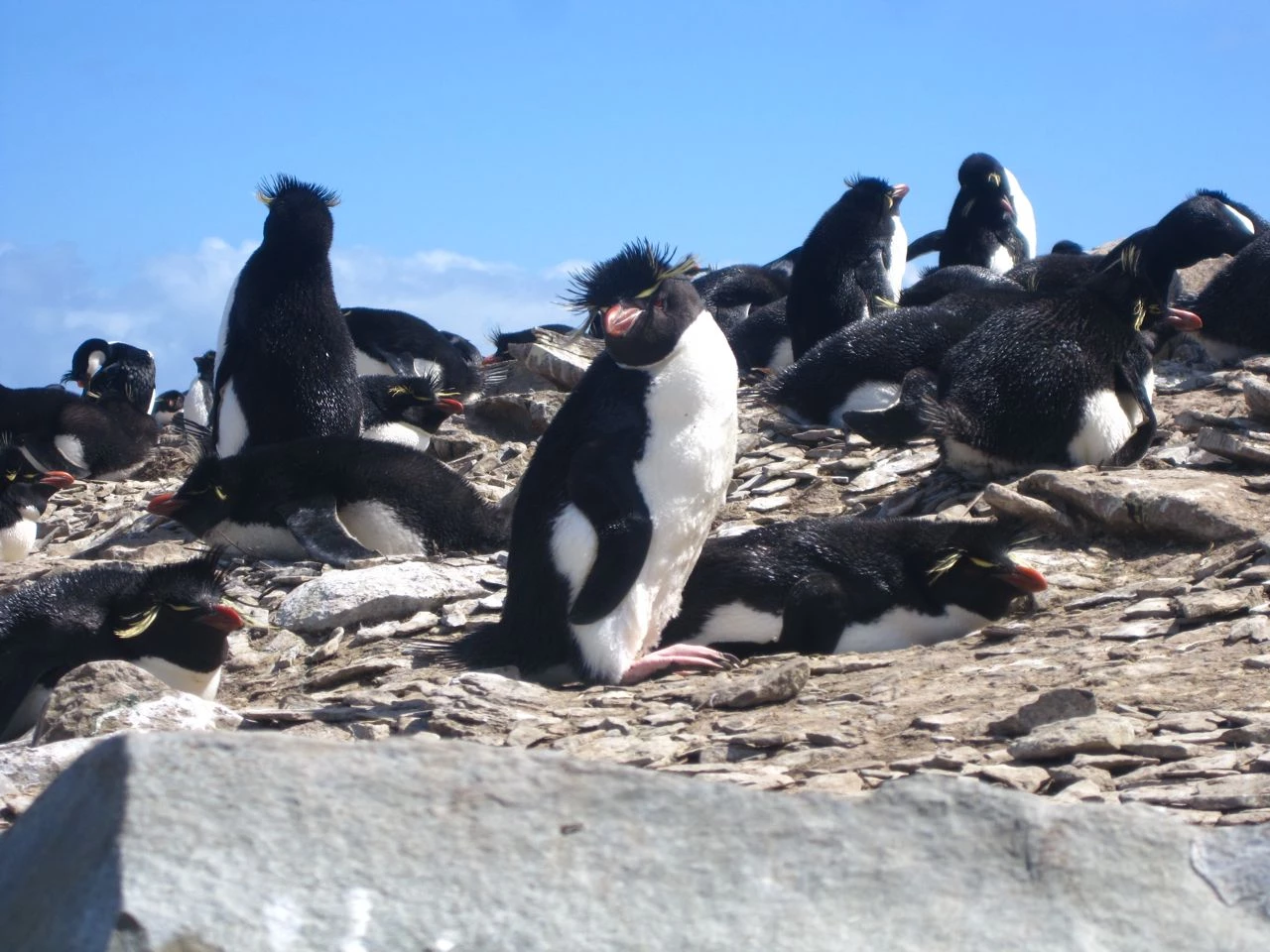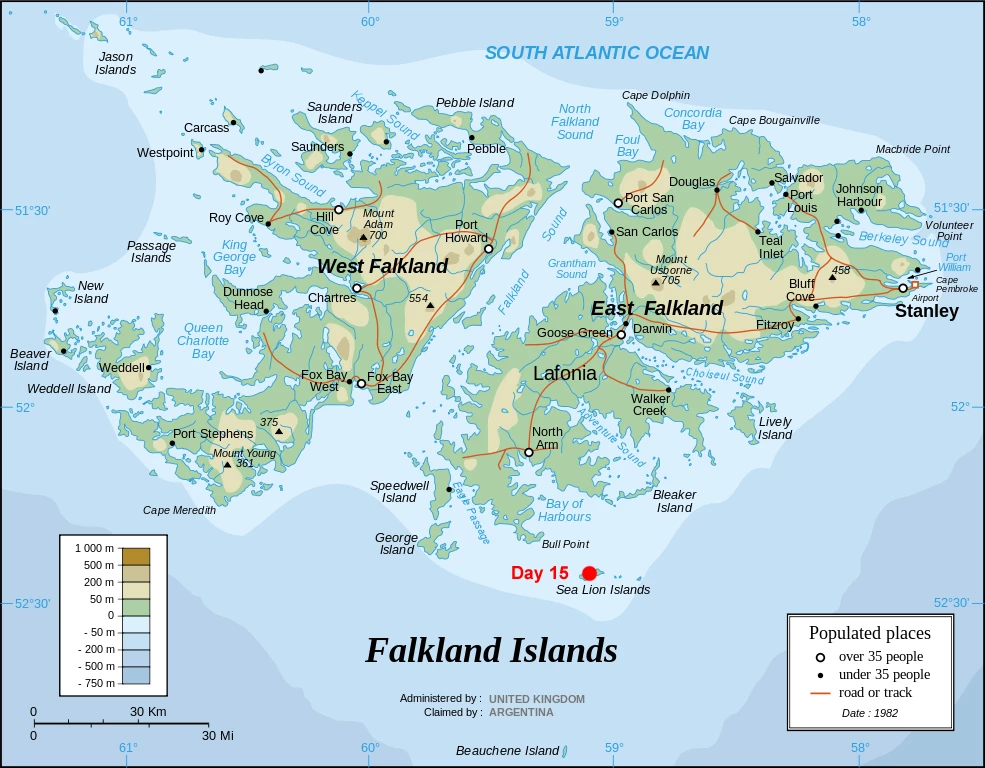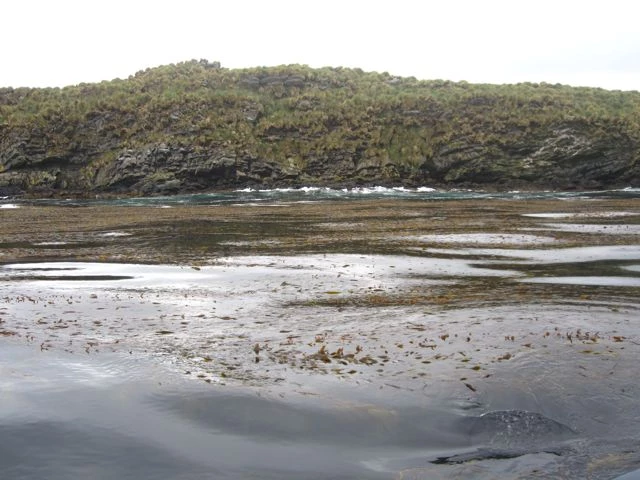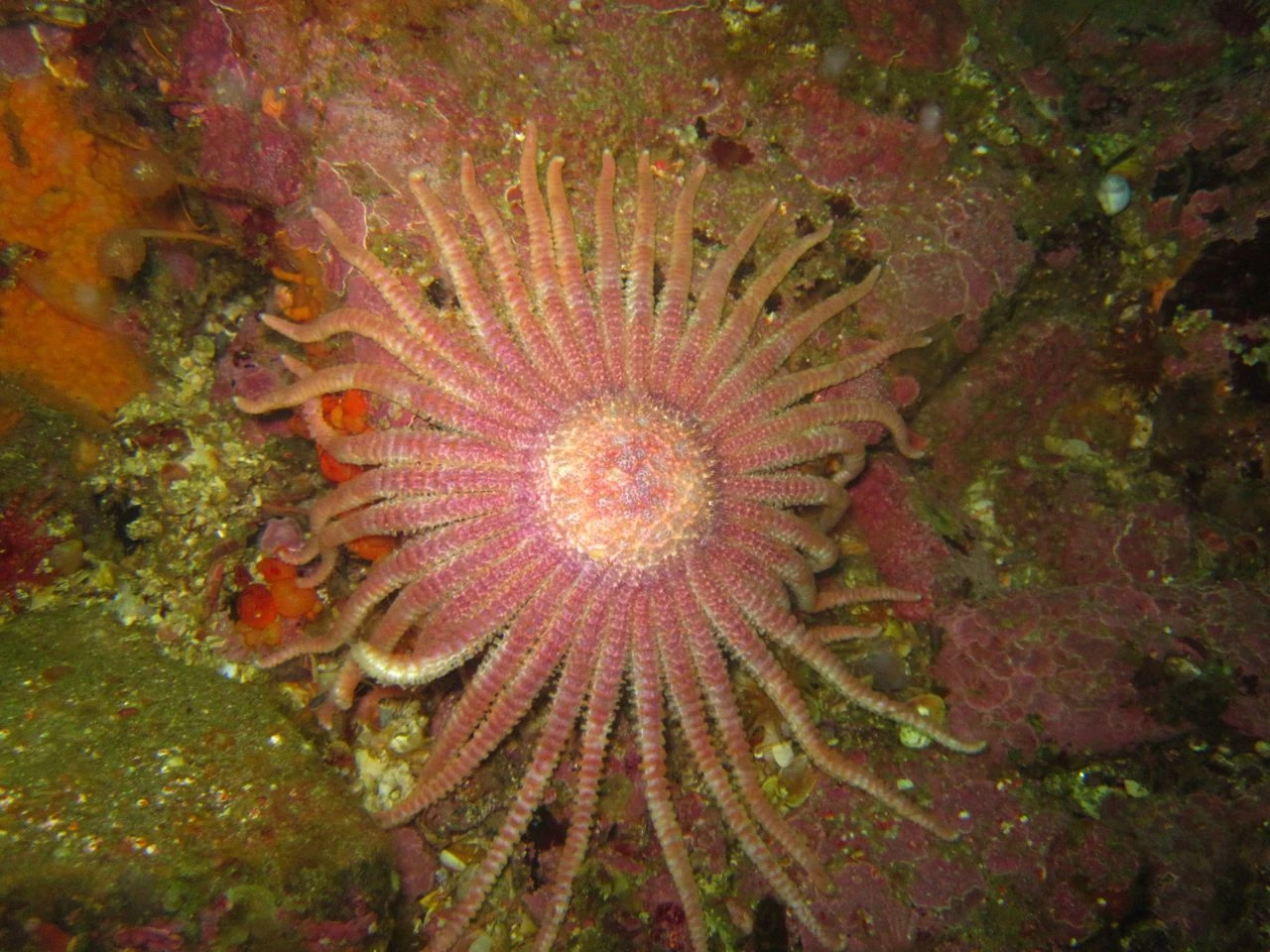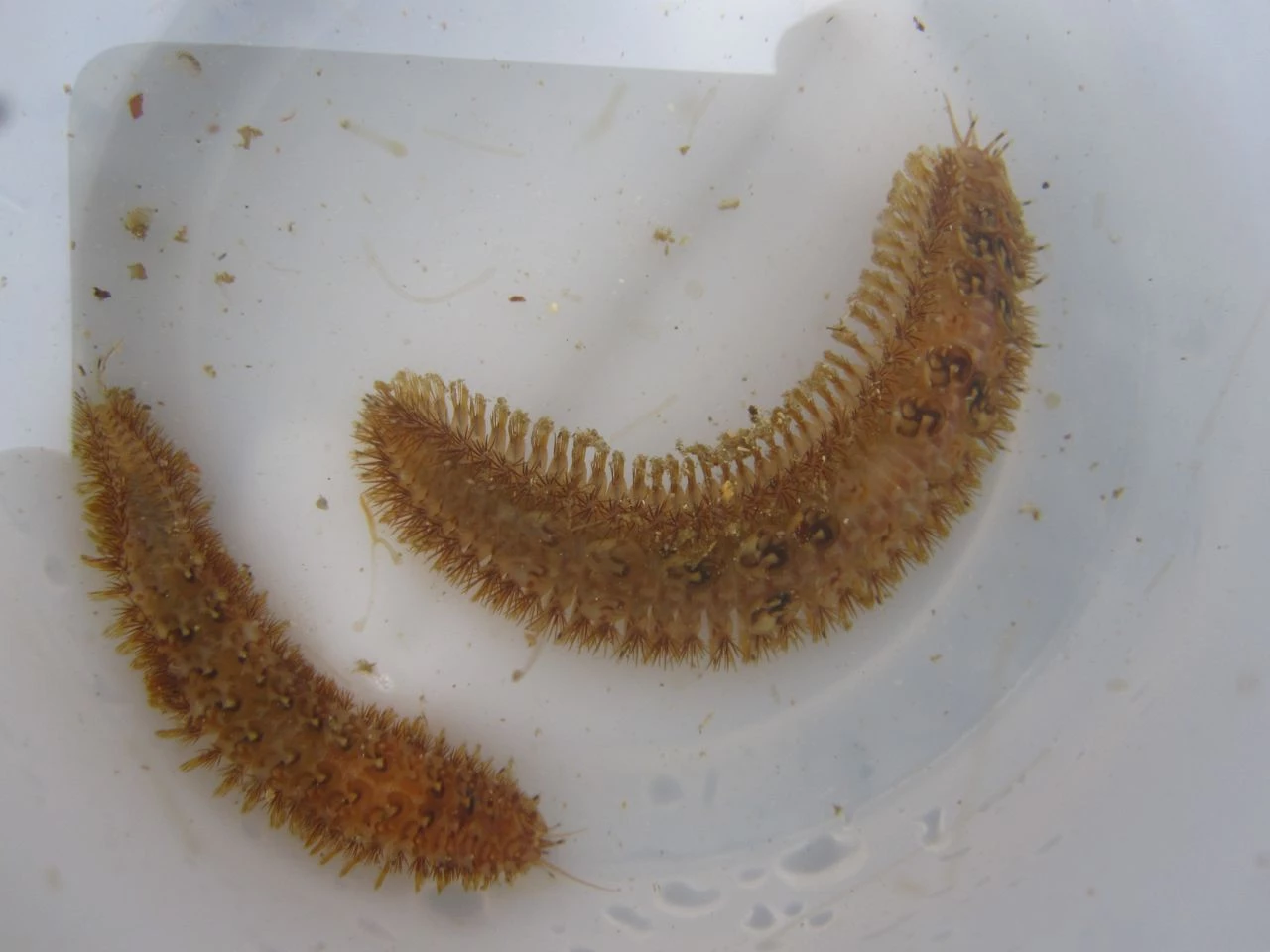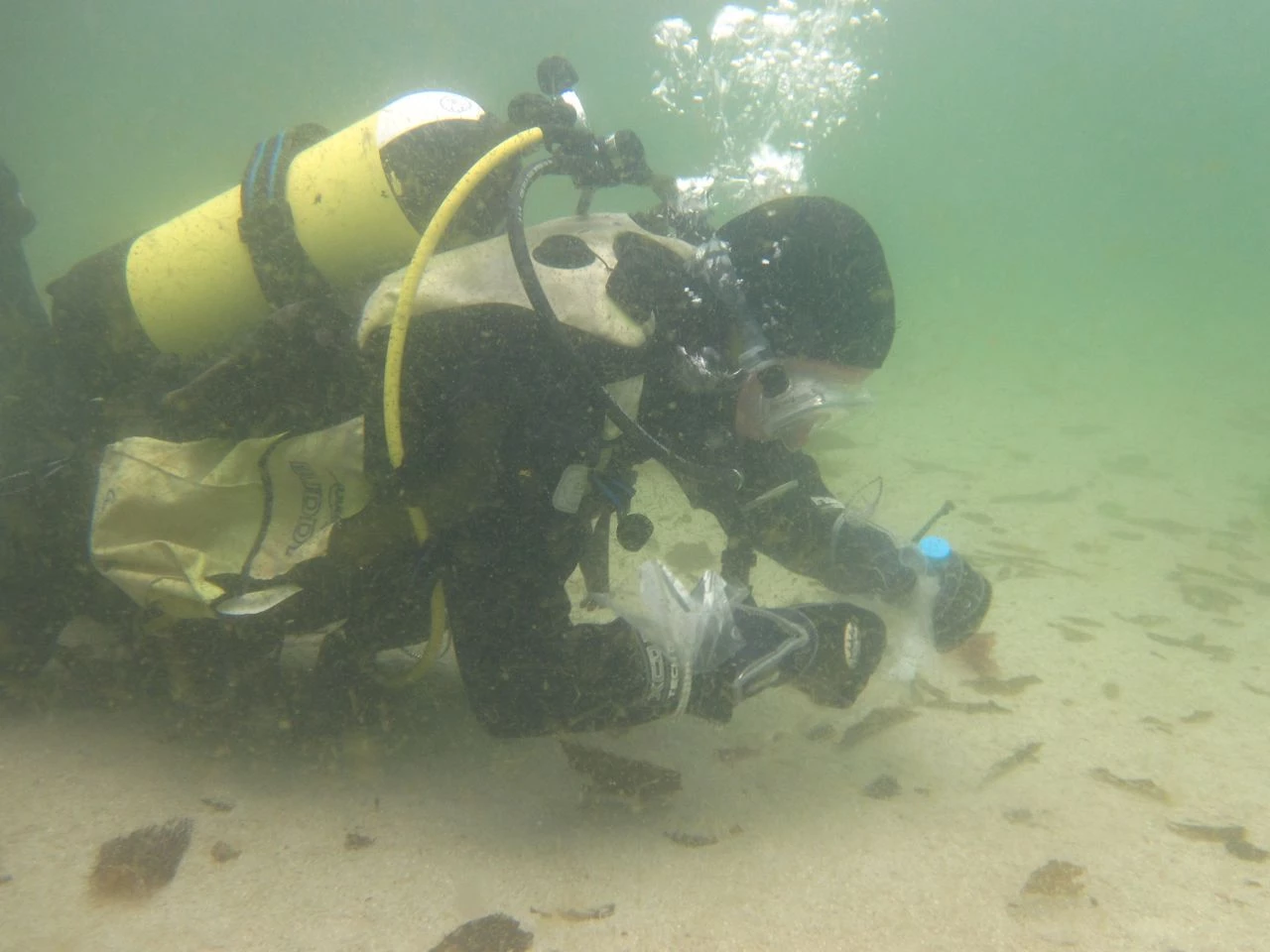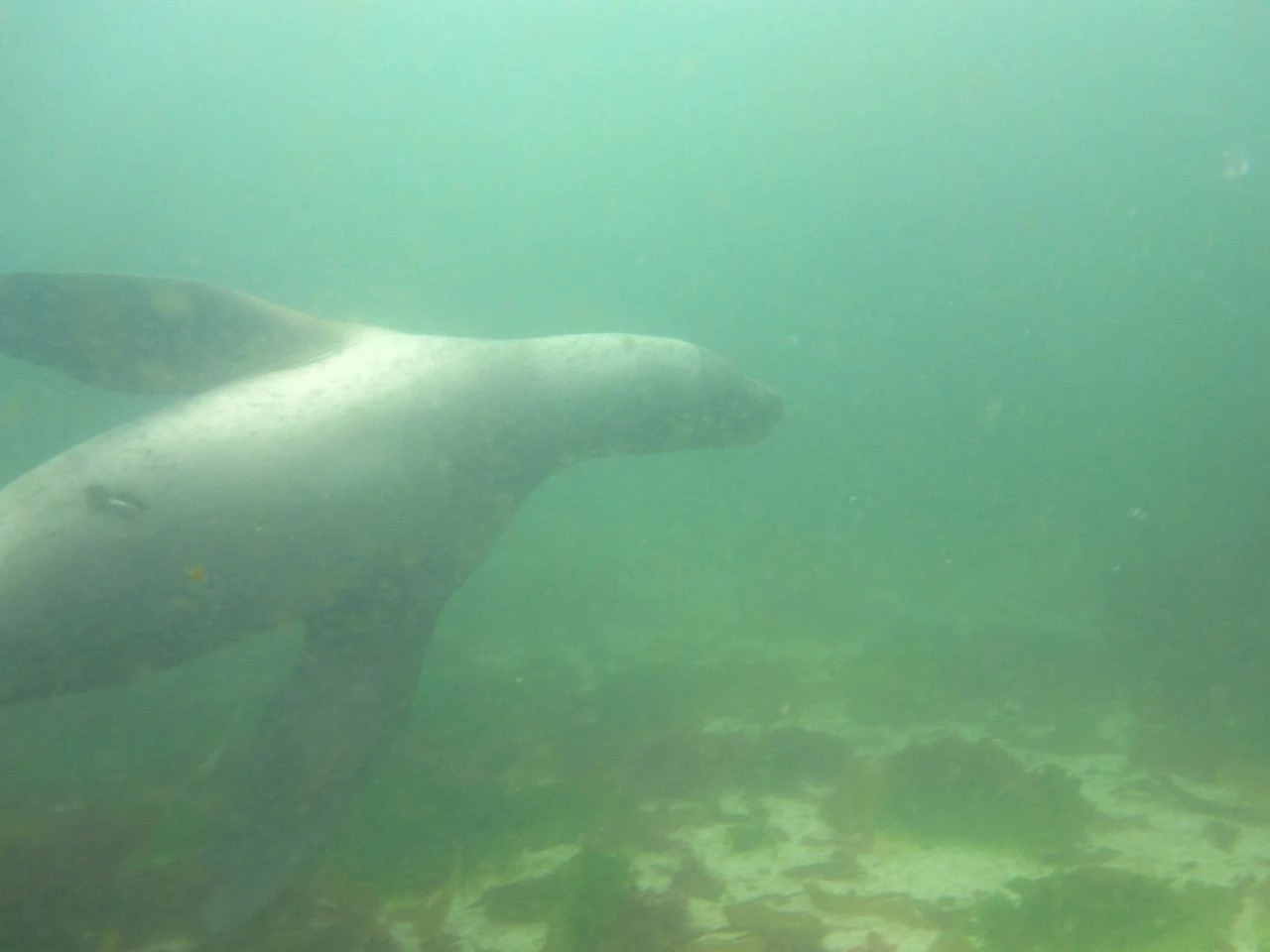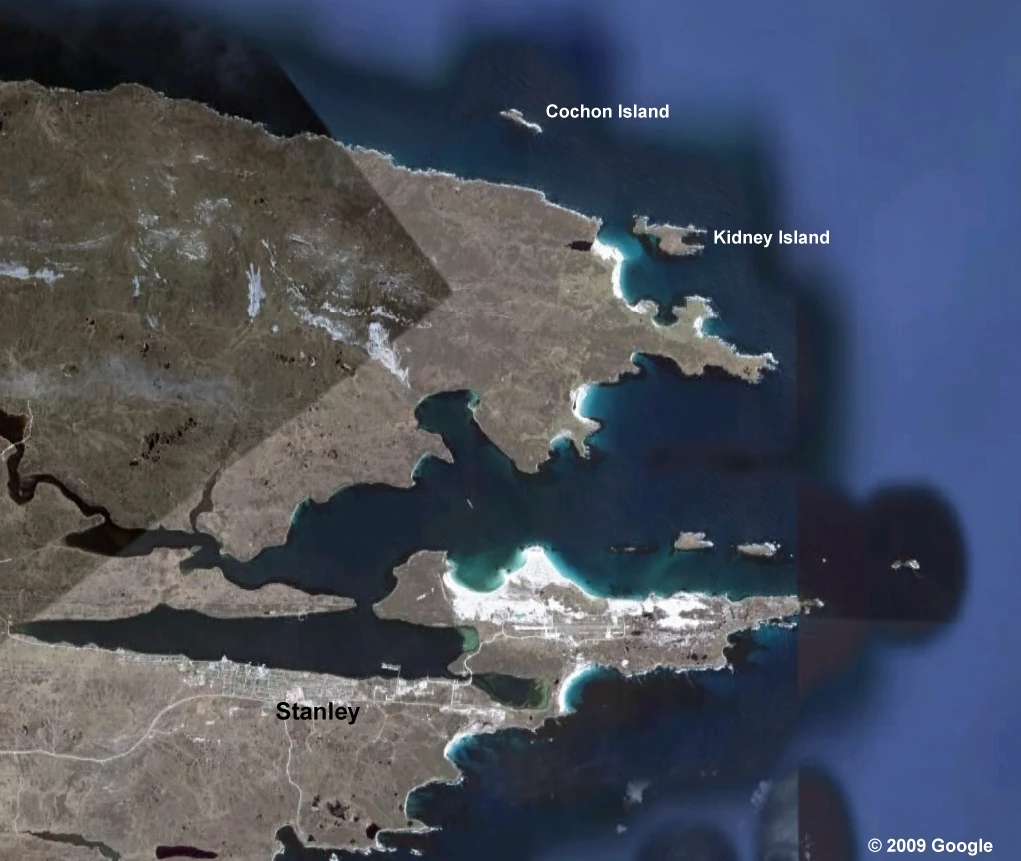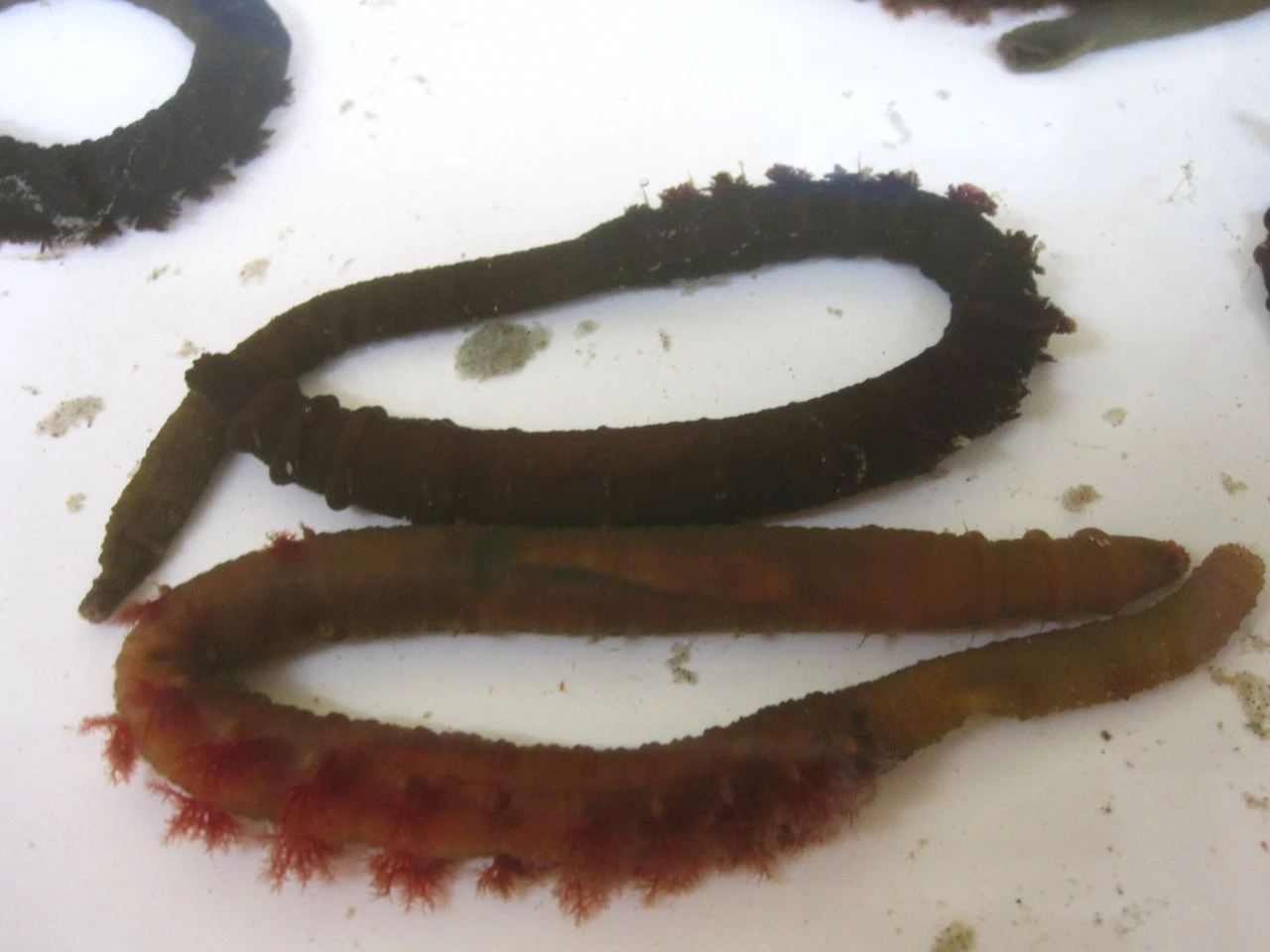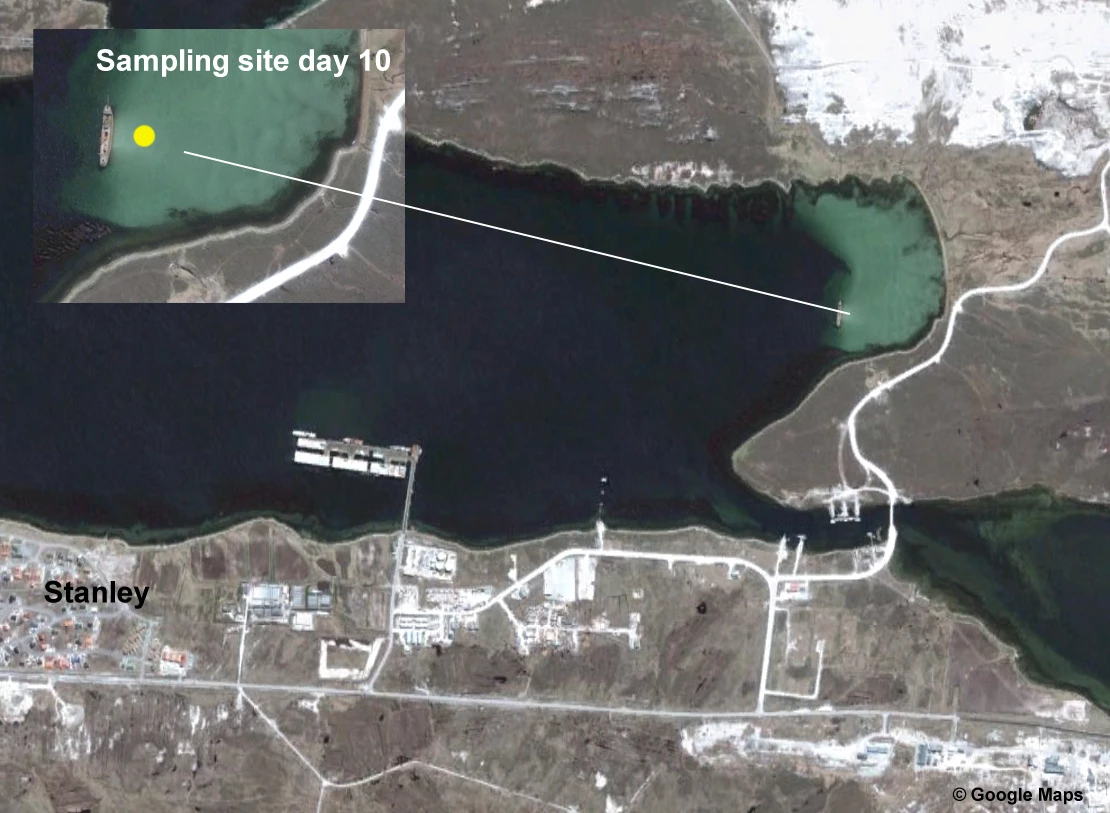Polychaete research in the Falklands by Teresa Darbyshire - day 17
, 1 Rhagfyr 2011
I’m halfway through my trip. Two weeks from now, at the time I’m writing this, I should be back in my own bed. It’s a strange thought.
My intention to do another pre-breakfast orca vigil this morning failed as I woke to to the sound of wind and rain at 5.30. I wasn’t that dedicated and so went back to sleep. Still, after breakfast, with a couple of hours before my flight back, I headed out with a last hope. As I reached the beach I thought I saw a black fin in the water….no it was five! I spent the next hour and a half happily watching a pod of orcas patrolling outside the sheltered pool that the seal pups play in (photo 1). The occasional squall blew through leaving me very damp and the strong wind made standing up difficult but it was worth staying. My camera’s not good enough to get really good shots from the distance I was at but I did what I could. Sadly, I didn’t get to see any seal-munching though, ah well.
The flight back was bumpy and the landing was my first experience of approaching a runway sideways but ended smoothly. The flight also afforded good views of the islands from the air (photo 2) The afternoon was spent editing two talks I am due to give here, one to a general public audience and one, slightly more technical, to the staff at the Fisheries department. Now that I have had a couple of weeks here and have some photographs of the worms I have been collecting, I was able to add a bit more local relevance to the presentations.
Sadly, the night before I went diving last week, the owner of the car I was borrowing returned and retrieved it. I now have to work on finding an alternative in order to do more shore sampling. Still ,we are off on a new dive survey on Friday morning and I have plenty to do at the lab tomorrow to keep me going until then.
Not much to report today so I thought I might add a few words on life out here for those who are interested.
Before I flew out, several friends voiced doubt and some concern about the availability of various supplies out here. In some cases you might have thought I was flying out to a third world country! Just in case though I was careful to pack some essentials. A small jar of marmite and some chocolate. Well, let’s face it, toiletries were bound to be available. I am happy to report however, that supply levels are good and marmite, the rating standard, is indeed available. Even my Green & Blacks milk chocolate can be replaced.
Groceries are generally quite expensive. However, as the two main supermarket brands stocked are Sainsbury and Waitrose it’s difficult to judge how much of the expense is the brand and how much the shipping!
Fresh fruit and vegetables are expensive and not available in a large variety but frozen and tinned varieties are easy to stock up on. Fresh meat is mostly beef or mutton of varying cuts and both are cheap, very good quality and very tasty. In terms of other kinds of non-food supplies its difficult to know what’s available. From what I’ve heard though most are bought via Amazon!
People are all very friendly and in that typical island style, everyone knows everyone and where they live. If you need to know where someone lives or their phone number, if you ask someone on the street then they will probably know!
As mentioned before, 99% of all cars on the road are 4x4s and most of these are landrovers. Speed limit is 25mph around town and 40mph everywhere else for very good reasons. It’s only around Stanley that smooth roads exist. Outside of town, roads are just gravel and only go to the main settlements. Beyond that there are just tracks that require the 4x4. I’ve heard several stories of accidents and none are between cars, all involve coming off the road. I won’t be speeding anywhere! Fingers crossed I’ll get some transport sorted though so I can trundle off somewhere new soon.




